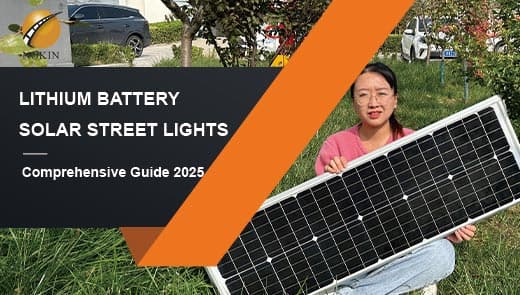Why Are Developing Countries Turning To Solar Street Lights?
Lighting issues are one of the major factors affecting sustainable development in developing countries. Driven by the global energy transition and sustainable development, lighting issues in developing countries are also undergoing profound changes. Due to many factors such as weak infrastructure and unstable energy supply, traditional lighting equipment cannot meet the needs of developing countries. With the introduction and popularization of solar street lights, this problem is being solved, so how did solar street lights become the preferred choice for developing countries to improve public lighting? Next, nokin will discuss it with you in depth!
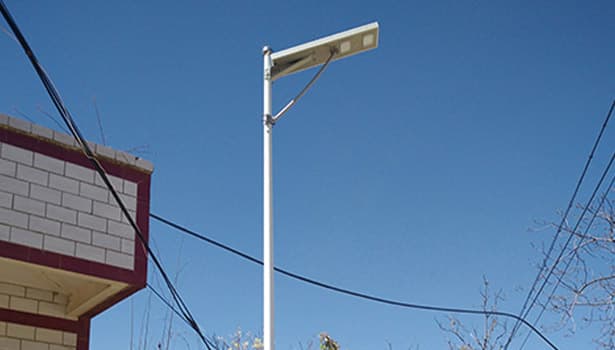
The Problem with Traditional Lighting in Developing Countries
Unstable Electricity Supply, Difficult Installation
In developing countries, especially in the vast rural and remote areas, weak power infrastructure is a common problem. According to the International Energy Agency statistics, the world's about 760 million people still live in a state of no electricity, most of which are concentrated in developing countries. In these areas, the installation of conventional street lights requires stable grid support, but the reality is that the main grid has limited coverage, and even if there is grid access in some areas, the power supply is extremely unstable, and frequent power outages and unstable voltage are common.
In many countries in sub-Saharan Africa, to install traditional street lights locally, it is first necessary to invest a lot of money in grid extension construction, including laying cables and building substations. This not only involves high equipment procurement and construction costs, but also faces complex land acquisition, community coordination and other issues. Moreover, even if the construction of the grid is completed, the stability of the subsequent power supply is difficult to guarantee, making the installation and use of traditional street lights difficult.
High Installation and Maintenance Costs and Financial Pressure
The installation costs of traditional lighting systems remain high. From the preliminary survey and design, to the mid-term cable laying, pole installation, lamps and lanterns debugging, and then to the late power capacity, each link requires a large amount of capital investment. According to the research of the World Bank, in some areas with complicated terrain, the installation cost of traditional street lamps is 3 - 5 times that of solar street lamps.
In addition to installation costs, maintenance costs also overwhelm local governments and communities. Components such as bulbs and ballasts of traditional streetlights have a short service life and need to be replaced regularly; power lines are also prone to aging and damage and need to be repaired. In some economically underdeveloped areas, due to the lack of professional maintenance personnel and adequate maintenance funds, street light equipment aging, failure can not be repaired in a timely manner, resulting in many street lights in a long-term “blind” state, the lighting effect is greatly reduced.
Poor Lighting Effect and Outstanding Safety Hazards
Due to unstable power supply and poor equipment maintenance, the lighting effect of traditional streetlights in developing countries is often unsatisfactory. The dim, flickering lights not only fail to provide residents with a good nighttime lighting environment, but also increase the risk of traffic accidents and crime.
In some cities in Southeast Asia, the incidence of traffic accidents at night is 40% higher than in normally illuminated areas due to insufficient lighting from traditional streetlights. Moreover, inadequate lighting makes it easier for lawbreakers to hide their tracks, and crimes such as theft and robbery occur from time to time, posing a serious threat to the safety of residents' lives and property. At the same time, poor lighting conditions also limit the development of community night activities, affecting the quality of life of residents and economic development.
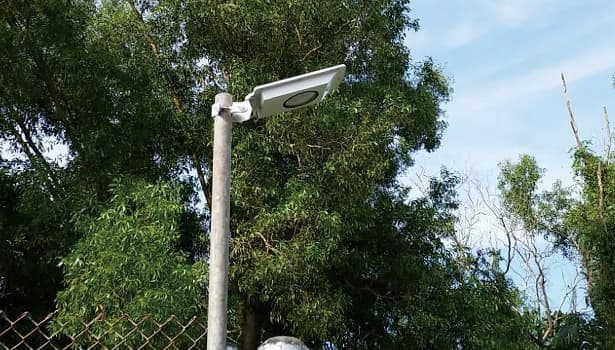
Factors for Turning to Solar Street Lights in Developing Countries
Self-sufficient, Ready-to-Use
In developing countries, the construction of power grids in remote areas has always been a challenge. For remote areas with limited economic returns, governments are often cautious about investing in grid construction, resulting in many villages being in a state of no or little electricity for a long time, waiting for grid access for years.
Solar street lights do not need to rely on the main power grid, through the solar panels to collect energy, battery storage of electricity, can quickly provide lighting for these remote areas. This “ready-to-use” feature greatly shortens the cycle from planning to commissioning, making it an efficient solution to the problem of lighting in remote areas.
Cost-saving and economically viable
The whole process of traditional grid expansion projects, from preliminary land clearing, cable laying, to transformer installation, takes months or even years, and the capital required is often in the millions or even hundreds of millions of dollars. In areas with complex terrain, the construction difficulty increases and the cost grows exponentially.
In contrast, the installation process of solar powered outdoor street lights is relatively simple. Construction personnel only need to install the light pole, fixed solar panels and connect the battery, without large-scale civil engineering and complex power facilities construction, significant savings in manpower, material resources and time costs. In addition, with the continuous progress of solar energy technology, the production cost of related equipment continues to decrease, coupled with government subsidies, international organizations, assistance, low-interest loans and other financial support channels, making the solar street light project more economically viable.
Outstanding Environmental Benefits
Developing countries are often faced with serious environmental pollution and greenhouse gas emissions during the process of industrialization. Traditional lighting methods, such as street lights that rely on diesel generators or coal for power generation, not only consume a large amount of fossil fuels, but also release a large amount of carbon dioxide, sulfur dioxide and other pollutants, which are extremely harmful to the environment and the health of residents.
As a clean energy source, solar energy does not produce any pollutants or greenhouse gas emissions during its use. Developing countries actively promote solar street lights, can effectively reduce dependence on traditional energy sources, reduce carbon emissions, help realize the goals of the international climate agreement, but also for residents to create a cleaner, healthier living environment. In addition, solar LED street lights run noiselessly, avoiding noise pollution and further improving the quality of life.
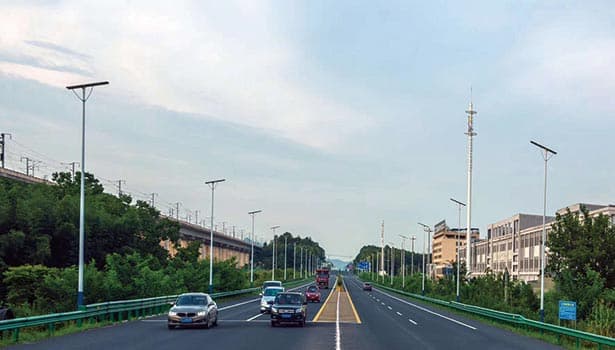
The Impact of Solar Street Lights on Community Development
Enhancing Safety and Quality of Life
Bright streetlights are an important guarantee for community safety. The popularization of solar street lights effectively improves night lighting conditions and significantly reduces the crime rate. A clear view of the street makes it easier for residents to travel at night, and the safety of women and children, in particular, is better protected.
In terms of road safety, good lighting reduces traffic accidents caused by poor visibility and lowers the risk of accidents involving pedestrians and vehicles. In addition, adequate nighttime lighting provides children with a safe space to study and play after school, enriches residents' nighttime life, and overall improves the quality of life in the community.
Promoting Economic Growth
The promotion of solar powered LED street lights has injected new vitality into the economic development of developing countries. The improvement of lighting conditions at night has enabled the night market, street stall economy and other night commercial activities to flourish. Vendors can extend their business hours to provide goods and services to after-work commuters, increasing their income while meeting the needs of residents' lives.
Good lighting environment can also enhance the attractiveness of the community, attracting more enterprises to invest and set up factories, creating more employment opportunities and promoting the prosperity of the local economy. At the same time, the implementation of the solar street light project, from equipment procurement, installation to post maintenance, requires the participation of a large number of manpower, which directly leads to local employment and promotes economic growth.
Enhance Community Cohesion
Solar powered outdoor street light projects usually encourage community residents to participate in them, from project planning, installation to daily maintenance, residents can play an active role. This sense of participation gives residents a greater sense of responsibility for community affairs and enhances community cohesion and a sense of belonging.
In Line With Sustainable Development
From the perspective of sustainable development, the use of solar powered LED street lights is in line with the goals of “affordable clean energy” and “sustainable cities and communities” in the UN Sustainable Development Goals (SDGs). By promoting clean energy and reducing carbon emissions, developing countries are able to realize their own development while contributing to the global fight against climate change and moving towards a more sustainable future.
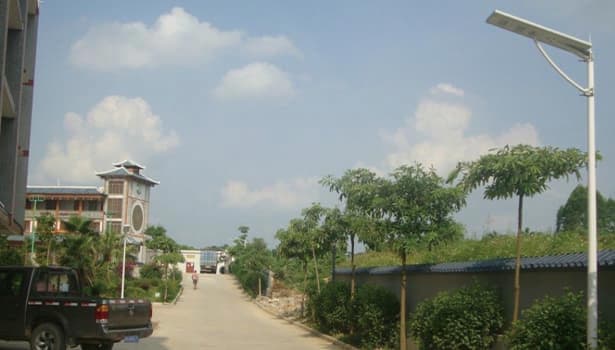
Can Solar-Powered Street Lights Solve Energy Crises in Developing Countries?
Challenges to Development
Despite the obvious advantages of solar powered street lights, they face many challenges in the promotion process in developing countries. Firstly, the high initial cost of purchasing solar panels, batteries, LED lamps and other equipment is a significant expense for communities and governments with a weak economic base, limiting the large-scale development of the program.
Secondly, solar street lights rely on sunlight, and in areas with prolonged rain and cloudy conditions, the power generation efficiency of solar panels will be greatly reduced, affecting the normal use of streetlights. In addition, components such as batteries have a certain service life and need to be maintained and replaced on a regular basis, while in remote areas, maintenance is difficult to carry out effectively due to inconvenient transportation and lack of technicians. Finally, the large-scale promotion of solar street lights requires sound planning, adequate financial support and a stable supply chain system, which is still a difficult barrier for many developing countries to cross.
Potential for Solving the Energy Crisis
Although solar LED street lights cannot completely solve the energy crisis in developing countries, they are an important part of the energy solution. Through the use of solar street lights, the majority of developing countries have significantly reduced the demand for traditional grid power for lighting equipment, and are able to supply limited power resources to hospitals, schools and other more critical places, effectively guaranteeing the basic needs of people's livelihood and social development.
The distributed nature of solar powered street lights enables them to flexibly develop energy solutions based on the actual needs of different communities, and to achieve localized energy supply and management. With the continuous progress of technology and further cost reduction, solar street lights will play a greater role in solving energy problems and promoting sustainable development.
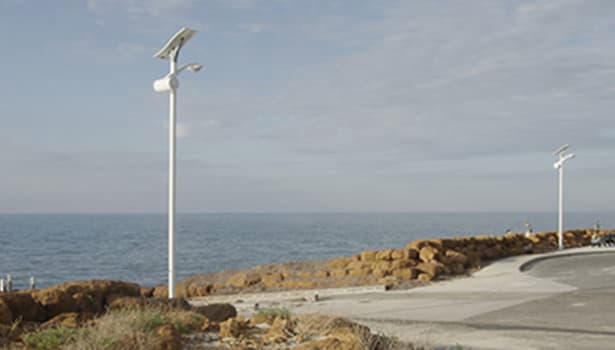
Conclusion
In many developing countries around the world, the shift to solar powered LED street lights is an inevitable trend driven by infrastructure, economic, and environmental factors. However, the promotion of solar street lights faces challenges such as high procurement costs for equipment such as solar panels and batteries in the early stages, as well as unstable power supply due to insufficient light and maintenance difficulties in remote areas. However, with the upgrading of photovoltaic technology, solar panel conversion efficiency, equipment costs down, coupled with the global emphasis on sustainable development, international aid programs and green financial policies tilted toward solar street lights, the future of solar powered street lights as green lighting equipment, will certainly play an important role in the construction of developing countries, help the global energy transition and environmental protection.

